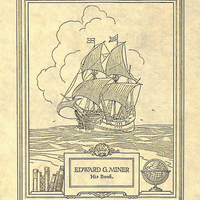University of Rochester Medical Center - Edward G. Miner Library

Rochester, New York 14642
Phone: 585-275-3361
Fax: 585-756-7762
Head, Rare Books and Manuscripts - 585-275-2979 - Miner_Information@urmc.rochester.edu
University of Rochester Medical Center - Edward G. Miner Library
About
The founding dean of the School of Medicine and Dentistry, George Hoyt Whipple, recognized the central role of the Library in the teaching, scholarship, and patient care that went on within its walls. When the Library was established in 1925, it was placed in the physical heart of the Medical Center, designating it as the intellectual hub of the institution It remains there today, embracing the latest technologies and teaching models, while maintaining time-honored traditions of scholarly pursuit.
The Library has a long history of generous support from donors, especially the Miner and Lamont families In 1927 Edward G. Miner, a trustee of the University and chair of the University Library Committee, donated the cholera and yellow fever portions of his valuable rare book collection to the Library. Mr. Miner continued to add to this collection until his death in 1955.
In 1967 Mr. Miner’s son-in-law, Thomas S. Lamont, made a substantial bequest to support the history of medicine collections.
The digitization of the Yellow Fever Collection is made possible through a generous gift from Ranlet and Beth Miner.
University of Rochester Medical Center - Edward G. Miner Library is a member of the Rochester Regional Library Council.
Collections

This collection is one of the largest and finest on yellow fever anywhere in the world. It contains monographs and reprints, representing the development of medical thought on yellow fever over the course of a century and a half. It reflects the confusion of 18th-century physicians when confronted with a new and deadly malady; the static debates between contagionists and non-contagionists during the 19th century; early attempts to identify a bacterial agent; and the consequences of Walter Reed's discovery of a mosquito vector. It also provides a view into the panicked efforts of local, state, and national government to respond to yellow fever's introduction and to check its spread; and to religious leaders' fervent warnings of pestilence as punishment for public sins. The digitization of the Yellow Fever Collection is made possible through a generous gift from Ranlet and Beth Miner.